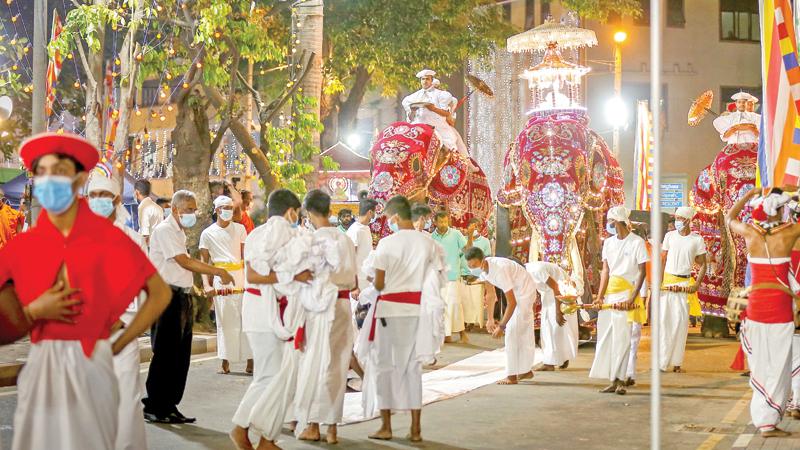
Dialog Axiata PLC again extended its support to the Gangarama Navam Perahera for the 10th consecutive year. The perahera took place on February 15 and 16.
In its 43rd run, the Gangarama Navam Perahera has been a beacon of light for the people of Sri Lanka since its inception in 1979. A significant day for Buddhists, the Navam Full Moon Poya Day, celebrates the appointment of Lord Buddha’s two chief disciples and the first-ever Buddhist Council held after his passing.
The Gangarama temple, one of the oldest Buddhist temples in Colombo, has held colourful and ebullient Peraheras, bathing the streets of Colombo in a sea of lights, flags, whip crackers, fire dancers, flag bearers, drummers and more to mark the importance of this day, while also cementing its status as a procession which upholds Sri Lanka’s rich culture and brings together communities from all walks of life.
As the world goes into its third year of the Covid-19 pandemic, the 43rd Gangarama Navam Perahera adhered to strict health and safety regulations, including hosting a limited number of artistes and spectators. President Gotabaya Rajapaksa was also in attendance.
Dialog, a public listed company and one of the main advocators of Sri Lankan culture and heritage, has been a long-term patron of many cultural events, including the Kandy Esala Perahera, Kelani Duruthu Maha Perahera, Baudhaloka Vesak Kalapaya, Sri Buddha Rashmi Vesak Kalapaya at Gangaramaya, Kataragama Esala Perahera, Gatabaru Esala Perahera, and Kotte Raja Maha Vihara Perahera. This is also in line with the company’s many efforts towards the preservation of Sri Lankan traditions and heritage, most notably, constructing the vestibule for the Dimbulagala Aranya Senasanaya, launching a website and publishing an updated directory of Amarapura Maha Nikaya Temples, restoring the Anuradhapura Maha Vihara Sannipatha Shalawa and contributing to the uplift of Sri Lanka’s rich cultural history.
